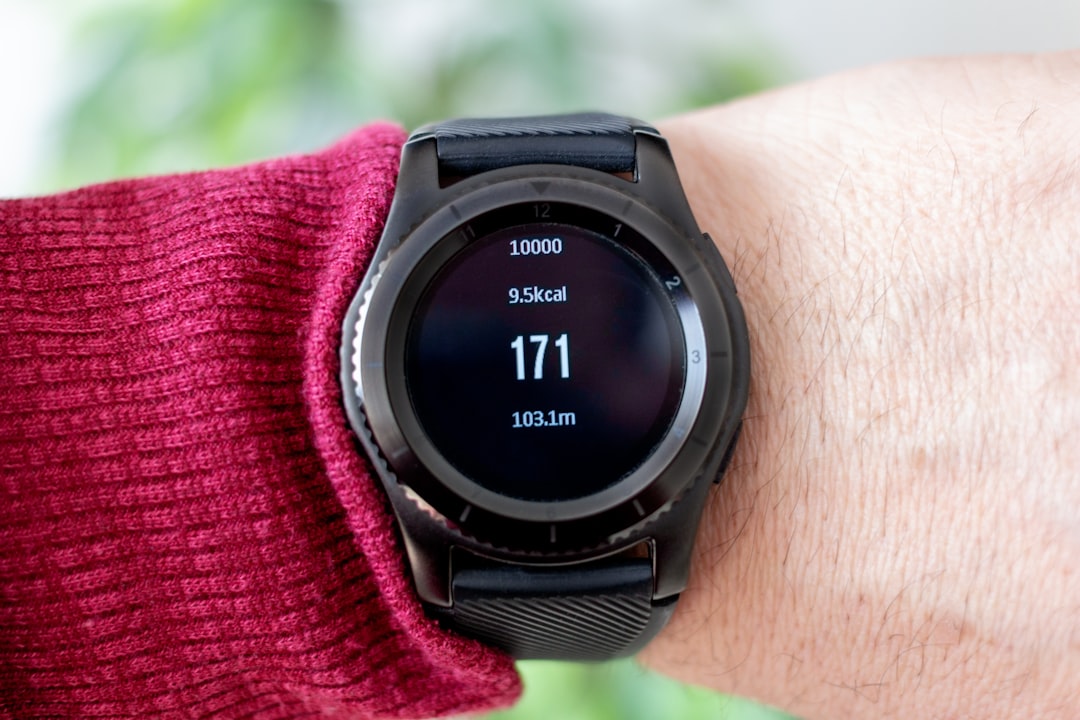Nov 19, 2023 > 3 "trends" in fitness that you should know about
Heart rate monitoring (only 20 years old) - Metabolic training (only 50 years old) - breathwork (only 2500+ years old)
The fitness industry has new trends. All the time. Some of these trends are anything but new. But mainstream media catches wind of it, has nothing to write about and will thus tell you all about the latest and greatest. Some of these trends are natural progressions from earlier trends.
In this post, I want to introduce a few (older) concepts and also tell you what (I think) we will be seeing a whole lot more of.
Heart rate
Heart rate monitoring has been made accessible for the better part of two decades. From cumbersome devices to chest straps, the advances made it much simpler for fitness-minded amateurs to use heart rate monitors. Today, we have superb advances in this technology that our watches have them. Not all tech is made equal though - the cheaper ones tend to have a lot of error in them. The more expensive ones rival a chest strap for accuracy.

Why is heart rate a relevant thing to monitor?
Training is all about the adaptation you are aiming to create.
You can work in Zone 2 to improve your aerobic base, for example.
What this means, for a 30-year-old is to spend as much time doing "cardio" in the 130 - 150 bpm.You can do interval training with complete recovery by elevating your HR to the max you are comfortable taking. And then resting until it comes down to around 120 bpm.
For example, sprinting and taking it to the “red” zone. Then, walking around until your heart rate drops down to the 120-130 bpm.You can do interval training with incomplete recovery. You elevate your HR to the max, and then instead of waiting until 120 bpm, maybe you wait only until 150 bpm. After a few repetitions of this, you take a much longer break.
For example, sprinting and taking it to the “red” zone. Then, walking around and sprinting as soon as you hit the 150 bpm mark. Doing this for 2-4 times, after which you realise it is getting hard to sprint. Now, you rest for 10 minutes or so and do it again. Or replace sprinting with something else and do that.
These few examples are meant to show you how we can systematically use a heart rate monitor to influence our training. Rather than mindlessly "working out."
Now, most of you already know about these monitors and have probably been actively using them.
Two important concepts (and biomarkers) you need to know related to them are:
Resting Heart Rate
This is your heart rate at rest.
The lower it is, the better.
Heart Rate Variability
The more variable your heart rate is, the better.
Contrary to beating like a metronome, we want our heart rate to keep varying.
Let's say your resting heart rate is 60 beats per minute. But if we look at 5 beats in a row, we might find the gap between them to be NOT 1s each but more like 1.1 - 0.87 - 1.03 - 0.91 - ...
The variability is an indicator of your "fight or flight" nervous system and your "rest and digest" nervous system. Less variability generally means you are constantly "switched on", which is not a good thing.
Your device probably measures this. And HRV can get complicated but the idea is to look at your average HRV over a block of time and have a high enough number.
To close it out ...
If you have access to a heart rate monitor and you do endurance training (steady-state or intervals), use the monitor.
To strike the right balance between volume, intensity, and recovery, zone-based heart rate training is recommended. This involves using a heart rate monitor during workouts to ensure you're training at the right intensity. By training across a range of intensities and volumes, you can develop the mitochondria within all your cells, leading to an efficient metabolic engine that drives both performance and longevity.
Measure your resting heart rate every morning. Or if you wear your device to bed, it is probably already doing it.
Measure your HRV every morning. Around the same time. Follow the same routine. It takes 2-3 minutes to do this.
Do this for a month (at least.)
I've been using a heart rate monitor for my training for the better part of a decade. I've been using HRV just a tad less than that. What I've not done a good job of is
explaining how to use it.
talking about my learnings from there.
I hope to correct these two real soon.
Metabolic Training
Yes yes, MetCons have been around forever.
But those are horrible kitchen-sink routines that leave you with a false sense of accomplishment. Lying in a pool of your own sweat has very little to do with whether it was good for you and your body.
Metabolic training (which is based on research done in the 1960s or thereabouts) is finally hitting the mainstream. After spending the last decade and a half on the fringes of the S&C community.
The idea is, again, building for specific adaptations.
You can do endurance training that will strengthen your heart (it is a muscle, after all.) Even that is simplistic, as you can strengthen the walls with a protocol, or you can strengthen how well it pumps with another.
You can do endurance training that will help you improve how you process blood lactate - that horrible burning feeling.
You can do training that will help you clear the lactate faster.
You can do training that will allow you to utilise your oxygen better.
You can do training that will allow you to tolerate CO2 better.
MetCons and HIIT have typically involved beating you to a pulp.
The training I am talking about is high quality, high power work. With ample rest. Say you sprint 50 metres and then walk around for 60 seconds. You shift your body into “power” and turn on the anaerobic system. And then shift it to the aerobic system to aid recovery. You bypass the in-between acid-producing system.
Mitochondria
A specific area you will hear more of is around the mitochondria, the so-called powerhouse of the cell. Improving the amount of mitochondria, and how well it works - all of it has a direct impact on your metabolic health.
Again, different protocols will create different adaptations via p2c2e.
Specifically, improving mitochondrial function in fast-twitch fibres. That's a big deal because these things are generally prevalent in our slow-twitch fibres.
Slow-twitch = less powerful but can last much much longer. A marathoner's fibre.
Fast-twitch = extremely powerful but does not last long. A sprinter's fibre.
And of course, to muddle things up, there are in-betweeners as well.
You will see training protocols for improving mitochondria in the intermediate and fast-twitch fibres.
Breathwork
Breathwork is even older than the other two. In yoga, pranayama has been extolled about forever.
But everything old is new again.
You will be hearing a lot more about breathwork and various methods to improve your health and fitness.
I am sure you've heard of Wim Hof. But that's just one specific method that might change your life or not do much for you. There are many many methods out there - one of which might be the right one for you.

The overarching principles though, are:
Breathe through your nose.
Learn to use your diaphragm to breathe.
Once you learn that, learn to expand your rib cage to breathe.
Inhale in a relaxed fashion.
Exhale naturally.
Can you elongate your exhale? Without struggling?
Can you hold your breath (after inhaling and after exhaling) without struggling?
To close it out
All 3 things I've detailed have been around for a while. Heart rate monitoring is two decades old. Metabolic training is (at least) 50 years old. Breathwork is at least 2500 years old.
But things happen in cycles.
All 3 are the real deal. Trends come and go but these are legitimate and astounding tools.
But unfortunately, you will also see a pile of bulls*** that packages the above in sexy (and unfortunately unhealthy) ways. Such is life.
To learn more about heart rate training, please check out Joel Jamieson.
To learn more about metabolic training, Joel is again a good place to start. And the other place would be Strong Endurance by StrongFirst.
To learn more about breathwork, you can start with Breath by James Nestor. Or check out The Wim Hof Method or Oxygen Advantage. Or learn pranayama from an amazing yoga teacher near you.
I've spent a lot of time with the HRV and metabolic training. I feel I have a good handle on them and I am ready to add those components to my coaching.
With breathing, I feel I am just getting started.
If all 3 are news to you, start with breathing.
If you are good with breathing (most/all of the bullets I listed under breathing make sense), then move to the heart rate stuff. The metabolic training (partly encapsulated in the heart rate stuff) is if you are already into strength and conditioning stuff and have a great RHR and HRV.
If this was too much jargon and not helpful, please let me know. I want to improve my writing and your feedback will be immensely useful.


